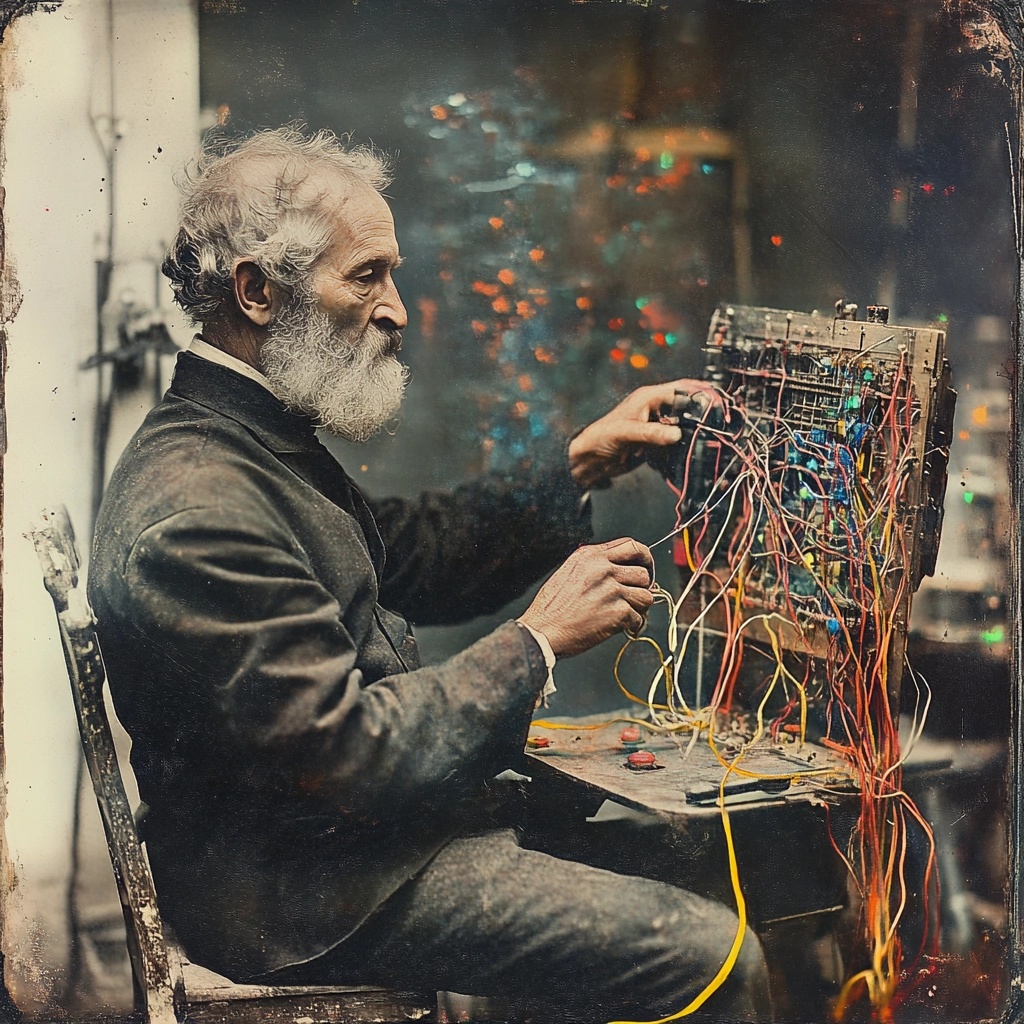THE SUPERMALE (2)
By:
October 27, 2025

We are pleased to serialize an excerpt from Alfred Jarry’s proto-sf novel The Supermale (1902), translated by Josh Glenn, for HILOBROW’s readers. This excerpt first appeared in Before Superman: Superhumans of the Radium Age (MIT Press, 2025), an anthology edited by Josh Glenn.
ALL INSTALLMENTS: 1 | 2 | 3 | 4 | 5.
Consulted as to what approach might get the desired results, the American engineer Arthur Gough offered the following suggestion: “Hypnotism! It’s infallible. But of course, that would be your department, Doctor.”
Bathybius shivered at this. “I saw Marcueil hypnotize the female subject… put her to sleep in articulo mortis… his own death, I mean, since she was about to stick a pin into his eye. His gaze is entrancing. Which of you would willingly stare into the “eye” of a locomotive, an eye that looms larger as the machine speeds fatally towards you?”
“Then perhaps,” suggested Gough, “we might take inspiration from the science of the ancients. St. Jerome’s life of Hilarion, for example, suggests that the Desert Fathers understood how to influence the spirit.” From memory, he quoted Hilarion’s jibe to a malignant spirit who’d tried and failed to tempt him: “Thy strength must be very great (O Demon), as thou art stopped and constrained by a strip of copper and a braid of wire!”
“Aha!” said Elson immediately. “A magneto-electric device.”
Thus it was that Gough, who’d long since proved himself capable of inventing anything, was commissioned to construct the most fantastical machine of the modern era — a device not intended to produce physical effects, but rather to influence the un-influenceable. We might call it: the Love Machine.
If Marcueil was a “machine,” a man of “iron” constitution — someone whose extraordinary stamina, that is to say, allowed him to triumph over mechanical devices, then in order to advance the cause not merely of science and medicine, but also bourgeois morality, the coalition of engineer, chemist, and doctor would pit machine against machine. If Marcueil had lost his soul in the process of becoming machine-like, then they’d restore equilibrium via a technology capable of manufacturing… yes, a soul.
Gough immediately calculated how to go about assembling such a device. Without bothering to explain his methods, in merely two hours he’d set everything up.
His design was inspired by Faraday’s experiments involving a coin suspended between the poles of a powerful electro-magnet. Although copper itself is not magnetic, as a magnet approaches the coin, the magnetic field causes electrons on the surface of the copper to rearrange themselves and begin rotating. Instead of dropping, then, the coin will move as if sinking through a viscous fluid. Now, if one has sufficient courage to substitute one’s own head in place of the coin — and Faraday, as we know, did precisely this — then one wouldn’t feel a thing. What is extraordinary, here, is that we should experience nothing; but what is terrible is that nothing has never meant anything, to scientists, other than “we don’t know what,” an unexpected force, an x, perhaps death.
FRENCH PROTO-SF TRANSLATIONS BY JOSH GLENN: Raymond Roussel’s LOCUS SOLUS [excerpt] | Noëlle Roger’s THE NEW ADAM [excerpt] | Alfred Jarry’s THE SUPERMALE [excerpt] | Jean de La Hire’s THE MYSTERY OF THE XV [excerpt].
RADIUM AGE PROTO-SF: “Radium Age” is Josh Glenn’s name for the nascent sf genre’s c. 1900–1935 era, a period which saw the discovery of radioactivity, i.e., the revelation that matter itself is constantly in movement — a fitting metaphor for the first decades of the 20th century, during which old scientific, religious, political, and social certainties were shattered. More info here.
SERIALIZED BY HILOBOOKS: James Parker’s Cocky the Fox | Annalee Newitz’s “The Great Oxygen Race” | Matthew Battles’s “Imago” | & many more original and reissued novels and stories.
